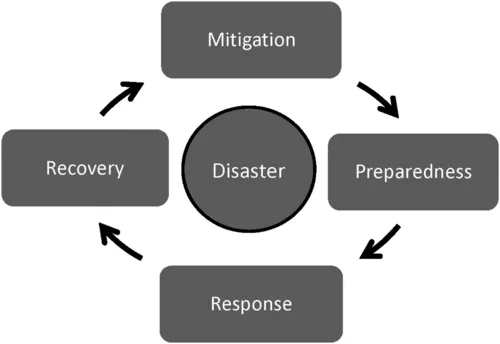
Business Continuity from Preparedness to Recovery
A Standards-Based Approach
- 324 pages
- English
- ePUB (mobile friendly)
- Available on iOS & Android
About this book
Business Continuity from Preparedness to Recovery: A Standards-Based Approach details the process for building organizational resiliency and managing Emergency and Business Continuity programs. With over 30 years of experience developing plans that have been tested by fire, floods, and earthquakes, Tucker shows readers how to avoid common traps and ensure a successful program, utilizing, detailed Business Impact Analysis (BIA) questions, continuity strategies and planning considerations for specific business functions.One of the few publications to describe the entire process of business continuity planning from emergency plan to recovery, Business Continuity from Preparedness to Recovery addresses the impact of the new ASIS, NFPA, and ISO standards. Introducing the important elements of business functions and showing how their operations are maintained throughout a crisis situation, it thoroughly describes the process of developing a mitigation, prevention, response, and continuity Management System according to the standards. Business Continuity from Preparedness to Recovery fully integrates Information Technology with other aspects of recovery and explores risk identification and assessment, project management, system analysis, and the functional reliance of most businesses and organizations in a business continuity and emergency management context.- Offers a holistic approach focusing on the development and management of Emergency and Business Continuity Management Systems according to the new standards- Helps ensure success by describing pitfalls to avoid and preventive measures to take- Addresses program development under the standards recently developed by ISO, ASIS and NFPA- Provides both foundational principles and specific practices derived from the author's long experience in this field- Explains the requirements of the Business Continuity Standards
Frequently asked questions
- Essential is ideal for learners and professionals who enjoy exploring a wide range of subjects. Access the Essential Library with 800,000+ trusted titles and best-sellers across business, personal growth, and the humanities. Includes unlimited reading time and Standard Read Aloud voice.
- Complete: Perfect for advanced learners and researchers needing full, unrestricted access. Unlock 1.4M+ books across hundreds of subjects, including academic and specialized titles. The Complete Plan also includes advanced features like Premium Read Aloud and Research Assistant.
Please note we cannot support devices running on iOS 13 and Android 7 or earlier. Learn more about using the app.
Information
Business Continuity—A Definition and a Brief History
Chapter Summary
Key terms
ASIS SPC.1-2009; Certification; Emergency management; ISO 22301; NFPA 1600; PS-Prep; Regulations; Risk management; Social science; Standards1.1. Introduction
1.2. History
1.2.1. Emergency Management

1.2.2. Community Disaster Services
1.2.3. Social Science
Table of contents
- Cover image
- Title page
- Table of Contents
- Copyright
- Preface
- Acknowledgments
- Digital Assets
- Introduction
- Chapter 1. Business Continuity—A Definition and a Brief History
- Chapter 2. Understanding the Standards
- Chapter 3. Building a Business Continuity Capability
- Chapter 4. Emergency Management—Preparedness and Response
- Chapter 5. Business Impact Analysis
- Chapter 6. Risk Assessment
- Chapter 7. Mitigation and Business Continuity Strategy
- Chapter 8. Business Continuity Plans and Procedures
- Chapter 9. Orientation, Exercising, and Testing
- Chapter 10. Continuous Improvement
- Appendix A. Sample Competencies Suggested for Business Continuity Manager
- Appendix B. Required Documents under ISO 22301
- Appendix C. Emergency Plan Table of Contents
- Appendix D. Sample Business Impact Analysis Questions
- Appendix E. Sample Continuity Team Resource Tool Kit
- Appendix F. Websites That Contain Hazard Information
- Appendix G. Examples of Natural, Technological, and Man-made Hazards
- Appendix H. Excerpt from Risk Assessment Report—Hazards
- Appendix I. Full Scale Exercise Example
- Index